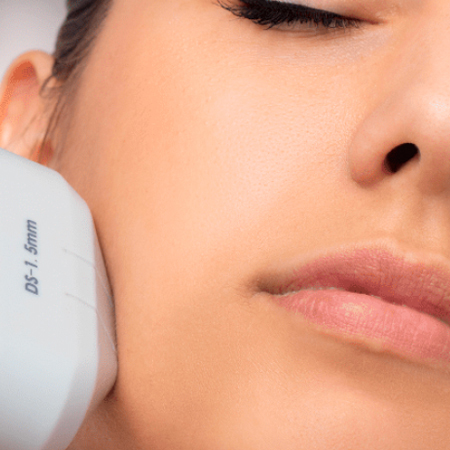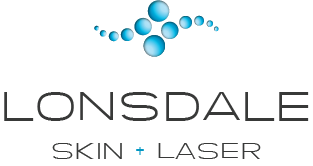
Is HIFU Treatment a Viable Alternative to Face Lifts?
High-Intensity Focused Ultrasound (HIFU) is an innovative cosmetic treatment that can tighten the skin and is considered by some as a painless and non-invasive alternative to face lifts. By utilizing ultrasound energy, HIFU encourages the production of collagen, resulting in firmer skin.
Initially used for tumour treatment, HIFU was first employed for aesthetic purposes in 2008. The FDA approved HIFU for brow lifts in 2009 and in 2014 for the upper chest and neckline to improve lines and wrinkles.
Several small clinical trials have confirmed HIFU’s safety and effectiveness for facial lifting and refining wrinkles without surgery’s associated risks. Although HIFU is also used for overall facial rejuvenation, lifting, tightening, and body contouring, these applications are considered “off-label” since the FDA has not approved HIFU for such purposes.
Further research is needed to determine the ideal candidates for HIFU. HIFU has shown promise as a replacement for facelifts, especially among younger patients who do not want to undergo surgery’s recovery time and risks. However, it may not be as effective for people with more severe sagging skin.
Focused ultrasound energy is utilized by HIFU to target the layers of skin below the surface. Rapid heating of the tissue is caused by ultrasound energy, which leads to cellular damage. However, this damage stimulates cells to produce more collagen, providing skin structure. This increase in collagen results in firmer, tighter skin with fewer wrinkles. Since the high-frequency ultrasound beams are directed at a specific tissue site below the skin’s surface, there is no damage to the adjacent tissue or upper layers of skin.
However, HIFU may not be suitable for everyone. Generally, the treatment is best for those over 30 years old and with mild-to-moderate skin laxity. Individuals with photodamaged skin or significant loose skin may require multiple treatments before experiencing visible results. Older people with severe skin laxity or sagging skin on the neck may not be good candidates and may require surgery. Moreover, individuals with infections or open skin lesions at the treatment area, severe or cystic acne, and metallic implants should not undergo HIFU.
Advantages of High-Intensity Focused Ultrasound (HIFU)
Over the last few years, there has been a significant increase in the popularity of HIFU and other nonsurgical facelift alternatives, according to the American Society for Aesthetic Plastic Surgery (ASAPS). The number of procedures performed has increased by 64.8% between 2012 and 2017. HIFU has a range of aesthetic benefits, including
- Reducing wrinkles
- Tightening sagging skin on the neck
- Lifting the cheeks
- Eyebrows and eyelids
- Enhancing jawline definition
- Tightening the décolletage and smoothing the skin.
Promising results have been observed in various studies. One study conducted on 32 Korean individuals in 2017 showed significant improvement in skin elasticity of the cheeks, lower abdomen, and thighs after 12 weeks of HIFU treatment. Another larger study of 93 individuals reported that 66% of those who received HIFU treatment perceived an improvement in their face and neck appearance after 90 days.
Sensations and After-effects of HIFU Treatment
During a HIFU procedure, you may experience mild discomfort that can feel like tiny electric pulses or a light prickly sensation. To reduce any discomfort, your doctor may recommend taking acetaminophen (Tylenol) or a nonsteroidal anti-inflammatory drug (NSAID), such as ibuprofen (Advil), prior to treatment.
After the treatment, you may experience mild redness or swelling, gradually diminishing over the next few hours.
What to Expect During a HIFU Facial Procedure
Preparing for a HIFU facial procedure is easy, as no special steps are required beforehand. However, removing any makeup and skin care products from the target area before the treatment is advisable.
During your appointment, a physician or technician will take you through the following steps:
- They will start by cleaning the target area thoroughly.
- A topical anaesthetic cream may be applied before the treatment.
- The physician or technician will then apply an ultrasound gel.
- Next, they will place the HIFU device against your skin.
- They will adjust the device to the appropriate setting using an ultrasound viewer.
- The device will then deliver ultrasound energy to the target area in short pulses for 30 to 90 minutes.
- Once the procedure is complete, the device will be removed.
You might feel a sensation of heat and tingling while the ultrasound energy is being applied. In case of discomfort, you can take pain medication.
After the procedure, you can resume your normal daily activities right away, as there is no downtime associated with HIFU facial treatments. If you require additional treatments, you can schedule them at your convenience.
Safety and Side Effects of HIFU Treatment for Face
High-intensity focused ultrasound (HIFU) is generally safe when performed by a qualified professional. The treatment allows you to resume your regular activities right after the procedure. You may experience some minor redness or swelling in the treated area, but these effects typically resolve quickly. Additionally, you might feel a light tingling sensation for a few weeks following the treatment.
Although rare, temporary numbness or bruising may occur. However, these side effects usually disappear within a few days.
The use of HIFU for tightening facial skin is considered safe, effective, and noninvasive. Compared to surgical face lifts, it has several advantages, including no incisions, scarring, or recovery time, and is more cost-effective.
Most patients will see complete results within three months after their final HIFU treatment. HIFU is a great option if you are looking for a treatment that is quick, painless, and noninvasive.
However, HIFU is not a cure-all for aging, and it is best suited for patients with mild-to-moderate skin laxity. Additionally, you may need to have the procedure repeated every one to two years as the natural aging process takes over. If you have more severe skin sagging and wrinkles due to age, HIFU may not be the best solution for eliminating these skin issues.



